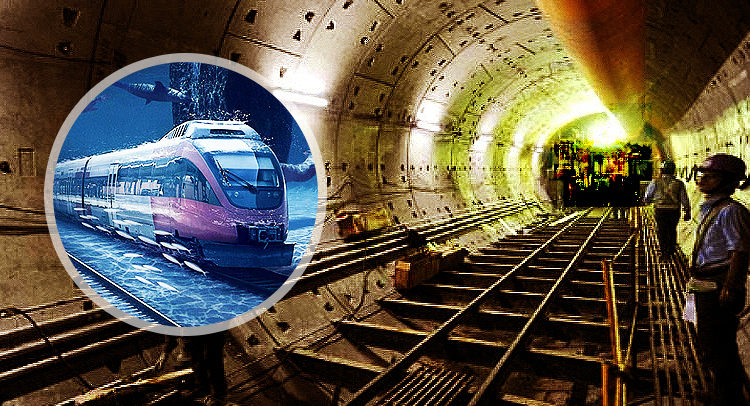In the same vein with the USA, England, Germany, Singapore and many more developed nations, India has also adopted the feature of undewater rail tunnel to its developmental programmes. In India, the Eastern state of Kolkata is going to introduce the facility for the first time in the country, as the project is built under Kolkata’s Hooghly river. Last week, Union Railway Minister Piyush Goyal has made an official announcement that the project is going to be operational very soon and shared a video of the metro line, which will have this underwater train.
The video, that is shared by the railway minister speaks about the engineering excellence that went into the construction of these underwater tunnels. It also descibes the “four protective covers” which will prevent water leakage in the two tunnels. These tunnels are about 520 metre-long and about 30 metre deep.
Naming the project an “example of excellent engineering” the Minister tweeted, “India’s first ever underwater train will start soon under Kolkata’s Hooghly River. The train is an example of excellent engineering and symbolises continuous progress of Railways.”
Goyal also said that making transportation comfier for the Kolkata residents, this is such an endeavor, for which the country should boast about. Passengers will experience a 60-second ride under the water once the line becomes operational.
Two organizations – Afcons Transtonnelstroy and Kolkata Metro Railway Corporation Ltd (KMCRL) were involved in implementing the project.
This underwater rail will be a part of the Kolkata Metro Line 2 and will be known as the East-West corridor of Kolkata Metro. It will pass through Hooghly river, having the honour of the first such river crossing in the country. The entire project is made at an expenditure of Rs 8,572 crore.
As planned, the 16km-line will be made operational in two phases. The first phase – a 5-km line will connect Salt Lake Sector 5 station to Salt Lake Stadium station and it is scheduled to start its run later this month. Secondly, the underwater portion of the line will connect Salt Lake Sector 5 station to Howrah Maidan station.
Two years back, the construction work of the metro tunnels under the river began at the Howrah end, and Parshuram Singh, worked as the chief engineer of the project. In his words, ”Kolkata had the honour of getting India’s first Metro and with the introduction of this service now, it will get yet another honour of hosting India’s first metro under the river.”

